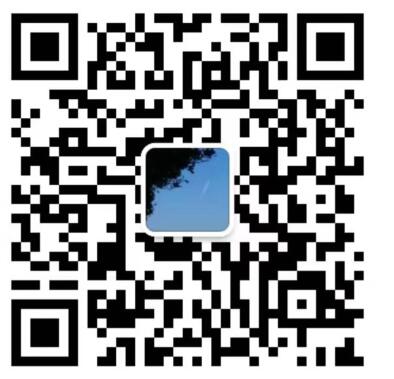托福听力备考提分重点在哪里?练好听力需合理运用这些方法
听力做笔记能力要加强
在托福听力进行中,材料是只读一遍的,而且在有些题目中,考生只有在材料播放完之后才能看到题目。正因如此,考生在听的过程中做好笔记就成为了一个非常重要的环节。在记录笔记的过程中,大家要做到条理清晰、书写尽量工整、提倡使用一些自己惯用的缩写和图形来表达,提高记笔记的效率,并能够为答题时候高效准确地提取信息打下良好的基础。而只有这样,大家在看到了题目后,才能根据之前所记录的笔记,有条理地分析出最终答案。如果对听力材料的内容理解不是特别充分,或者对可能考查的重点及细节把握不够,都会造成听完材料之后却对题目不知如何着手,这就要求大家在听材料的过程中,除去对材料本身的理解把握及记录之外,还应该注意对话中谈话双方对所谈论内容的观点及态度,从而从整体上感知材料,形成对材料的整体的全面的把握。
同步听写技巧不可不练
在托福听力备考过程中,听写练习是一个非常重要的环节。而小编建议大家,对于听写练习的开展可以在有了一定听力基础后再正式开始。这么做的原因很简单,听力基础较好的同学可以完全把握好听和写的节奏,在记录“写”的内容时,也可以同时把握好“听”的同步进行,不会有相互博弈的问题产生。很多同学听写中常会自己跟自己打架,顾着听就来不及写,专心写又没听清后面说的内容,结果听也没听懂,记录也乱七八糟自己都看不懂。想要避免这种问题,考生一定要练好听与写之间的平衡和节奏感。
分析练习做错原因整理错题
在听力练习完成之后,考生也不能简单地核对答案就觉得万事大吉。大家最好在核对答案的同时做好记录,查看一下自己有没有在同类问题或者相似内容出现反复错误的情况,通过对比发现可能存在的一些薄弱环节和高频盲区,及时调整之后的训练目标,有针对性地迅速搞定弱点问题,让自己的练习能有真正的快速提升。
纠正发音让听力更准确
有些考生可能会觉得,读音和听力有什么关系。实际上,不标准的发音不仅会影响到大家的口语考试,对于听力同样也是有损害的。明明标准发音是那样,考生自身认知的发音却有所差异,到了听力考试中就容易出现明明听到但听不懂的情况。实际上,因为发音问题导致自己听不懂标准考试听力发音的情况并不少见。而托福考试作为一门英语能力综合测试,各个题型之间所需求的英语能力其实也是相互关联的,纠正了读音问题,不仅会直接让各位的口语能力得到提升,也会让听力间接受益。因此,纠正读音问题对于听力来说也是必不可少的。
2020托福听力练习:人类是超级捕食者
Small carnivores—like foxes or raccoons or badgers—are themselves prey for larger predators—like wolves. So they spend time hiding instead of hunting. This influence that big predators have on their ecosystem is called a "landscape of fear." But humans are wiping out most of the world's big predators. Which you might assume is good news for the small ones.
But some researchers think that humans exert our own landscape of fear. Those foxes, raccoons and badgers just keep on hiding—only now, they're hiding from us. In reality, the situation may be far worse.
"Humans kill these smaller carnivores, so things like raccoons and foxes that we have here in North America, European badgers that they have in the U.K. and elsewhere in Europe, and we kill them at a rate that's four times greater than their conventional large carnivore predators…"
Liana Zanette of Western University in London, Ontario.
"Because our killing of these smaller carnivores is kind of off the scale, we're considered the superpredator."
To see how humans have altered the landscape of fear, Zanette and her team traveled to a small forest that's home to lots of European badgers near Oxford in the U.K. They used hidden speakers to broadcast the sounds of bears and wolves—two historic predators, both of which are no longer a threat. They also played the sounds of sheep, dogs and people. Hidden cameras recorded the badgers' willingness to look for food outside of their burrows as those sounds were played.
They discovered that the badgers have retained some of their fear of bear sounds, and know that dogs still pose a threat. But they've lost their fear of wolves.
"They treated the wolf calls just like the sheep calls."
Despite their fear of bears and dogs, the badgers still eventually went out to eat amid their sounds. But when they heard people "they would not emerge from their burrows at all until the human sounds were completely off. So they would cower in their burrows for the two hours that the sounds were on, waiting for those human sounds to go off."
In other words, they were leery of bears but were downright terrified of us. The findings are in the journal Behavioral Ecology.
"The badgers recognize who their enemies are…they have recognized humans as their principle threat."
狐狸、浣熊、獾等小型食肉动物是狼等较大食肉动物的猎物。所以它们大部分时间在躲藏而不是捕猎。这种大型捕食者对小型动物生态系统的影响被称为 “恐惧景观”。不过人类正在毁灭世界上大部分大型捕食动物。你可能会认为这对小型食肉动物来说是个好消息。
但是一些研究人员认为,人类正在施加我们自己的“恐惧景观”的作用。导致狐狸,浣熊和獾继续保持躲藏的状态,虽然现在它们只是躲着我们。但实际上,情况可能会更糟。
“人类猎杀这些小型食肉动物,所以像北美洲的浣熊和狐狸以及英国和欧洲其他地方的欧洲獾,人类对它们的猎杀率比它们传统意义上的天敌——大型食肉动物对它们的猎杀率要高4倍。”
利亚纳·詹尼特来自安大略省伦敦西大学。
“因为我们人类对这些小型动物的猎杀属于超标情况,所以人类应该被视为超级捕食者。”
为了查明人类是如何改变这种“恐惧景观”的,詹尼特和她的团队前往英国牛津郡附近的一个小森林,那里是大量欧洲獾的栖息地。他们使用隐藏的扬声器播放熊和狼的声音,这两种曾经的捕食者现在已经不再构成威胁了。他们还播放了绵羊、犬类和人类的声音。隐藏摄像机对獾在听到这些声音时是否愿意出洞觅食的情况进行了记录。
他们发现,獾对熊仍有一些恐惧,而且它们知道狗也对他们构成威胁。不过它们已经不再害怕狼。
“它们对狼叫的反应和听到羊叫差不多。”
虽然獾仍然害怕熊和狗,但是它们最后还是在这些动物的叫声中外出觅食。但是当它们听到人类的声音时,“直到人类的声音完全消失以后,它们才肯从洞里出来。所以在人类声音播放的两个小时里,它们可能会躲在洞里发抖,等待人类的声音消失。”
换言之,獾对熊保持警觉,但是对我们人类则是彻底的恐惧。这一研究结果发表在《行为生态学》期刊上。
“獾认出了谁是它们的敌人……它们把人类当作它们的主要威胁。”
重点讲解:
1. wipe out 摧毁;毁灭;使灭绝;
例句:Some animals have been wiped out through ignorance.
有些动物由于人们的无知而灭绝了。
2. in reality 事实上;实际上;
例句:The house looks very old, but in reality it's quite new.
这房子看起来很旧,实际上很新。
3. in other words 换言之;换句话说;也就是说;
例句:In other words, she must give up singing.
换言之,她必须放弃唱歌。
4. be leery of 猜疑的;警觉的;有戒心的;
例句:I tend to be a bit leery of cut-price bargains.
我对减价商品有点戒心。
2020托福听力练习:桦树在夜晚进入睡眠
This is Scientific American — 60-Second Science. I'm Cynthia Graber.
Many people remember the colors of the rainbow by the acronym ROY G. BIV. For red, orange, yellow, green, blue, indigo and violet. Well, the color indigo just made news.
Indigo gets its name from the plant Indigofera tinctoria and its relatives, which supply the dye that makes fabric the rich, beautiful color between blue and violet.
Indigo dye was used around the ancient world in fabrics created from Egypt to China to Meso and South America. And it's in South America that researchers recently found the oldest known example of fabrics dyed with indigo.
The artifacts were discovered at Huaca Prieta, a ceremonial mound on the coast in northern Peru. But their color was initially hidden by the grey tones that had leached into them from the materials used in the mound itself. But when a conservator carefully washed the fabric, the true colors reappeared.
"And it was at that point that I realized we probably had indigo and it was probably the world's oldest indigo."
Jeffrey Splitstoser, an anthropologist at George Washington University.
"Which was really exciting. I hadn't thought I'd be discovering, or we would be discovering, the world's oldest indigo, when I took on this project."
The research is in the journal Science Advances.
The dyed fabric is about 6,000 years old.
"In the Middle East there are inscriptions that discuss blue fabrics that date to about 3100 B.C. These are just texts though. And so we think they're referring probably to the earliest Old World indigo-blue dyed textiles. So that would date to about 5,000 years ago, 3100 B.C. And so these are at least 1,000 years older than that. And the earliest known indigo blue textiles were from Egypt and they date to around 4400 B.P., before present. So these are almost 2,000 years older than those."
Splitstoser says that the discovery means it's likely that the techniques to dye fabric blue were developed in the Americas before they were developed in Egypt.
"It really means that we have to look at the ancient Andes as one of the earliest sources of textile innovations in the world."
许多人记得彩虹的颜色按照首字母排列为ROYGBIV。这些首字母分别代表红、橙、黄、绿、蓝、靛、紫。而靛色最近有了新的消息。
靛蓝色得名于木蓝以及其相关植物,这些植物可以提供染料,让布料变成介于蓝色和紫色之间的一种富贵、美丽的颜色。
靛蓝染料在古代用于对布料进行染色,而这些布料一般产自埃及、中国、中美洲以及南美洲等地方。最近,研究人员就在南美洲发现了目前已知最古老的靛蓝染色布料。
人们在普雷塔遗址发现了这些手工艺品,普雷塔遗址位于秘鲁北部海岸,是一个曾用于举行仪式的土丘。但是这些手工艺品的颜色最初被灰色基调所掩盖,而灰色来自于土堆本身材料的渗透。但是,当一位文物修复员仔细清理这些布料后,其真正的颜色重新显现出来。
“就在那时我意识到,我们发现的可能是是靛蓝色,而且这可能是世界上最古老的靛蓝色。”
杰弗里·斯皮里特瑟是乔治华盛顿大学的人类学家。
“这太让人兴奋了。我在做这个项目的时候,从来没想过我或者说我们会发现世界上最古老的靛蓝色。”
这项研究发表在《科学进展》期刊上。
这块染色布料大约有6000年的历史。
约公元前3100年,在中东有讨论蓝色布料的铭文。虽然这些只是文字材料。不过,我们认为它们指的可能是最古老的靛蓝色纺织品。因此,靛蓝色染料的历史可追溯到5000年前,即大约公元前3100年。而这些新发现的染色布料至少要早1000年。此前已知最古老的靛蓝色纺织品来自于古埃及,距今大约4400年。所以,新发现的染色布料比那些要早约2000年。
斯皮里特瑟表示,这一发现表明,美洲发明将布料染成蓝色的技术很可能早于埃及。
“这实际上意味着,我们必须将古安第斯地区视为世界上织物创新最早的起源地之一。”
重点讲解:
1. take on 承担,接受(尤指艰巨工作或重大责任);
例句:He is ready to take on heavy responsibilities.
他乐于承担重担。
2. refer to 提到,指的是;
例句:It can refer to an academic subject or a practical skill.
这一词既可指某一学科也可指某种技能。
3. at least (数量)至少,不少于;
例句:Cacao has been cultivated for at least three millennia in Mexico, Central and South America.
在墨西哥及中南美洲,可可树至少已有了三百万年的种植历史。




